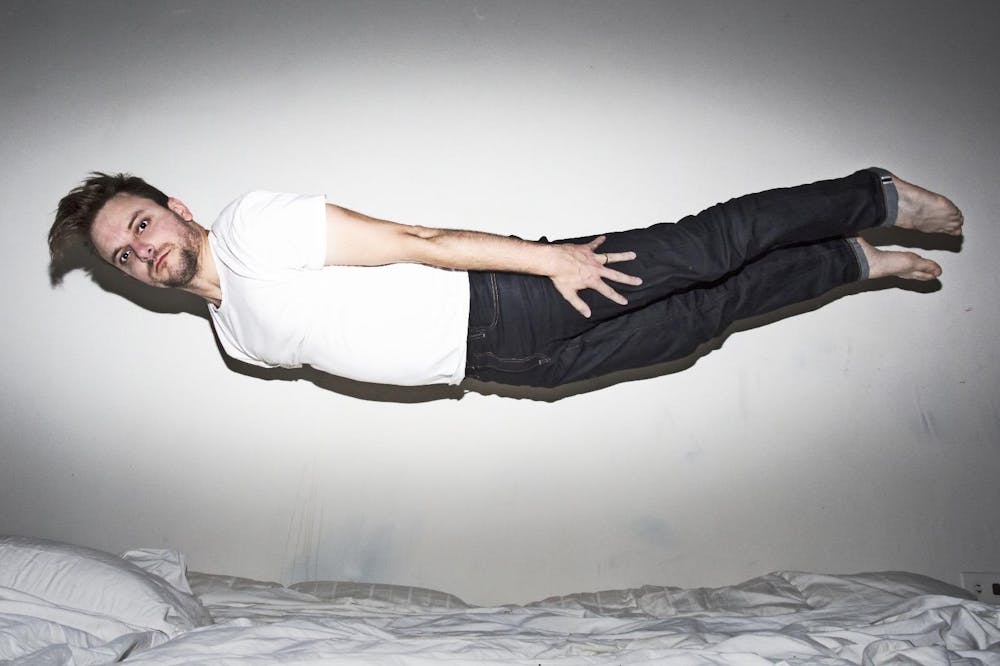Associate Professor of Theater Arts and Performance Studies Sydney Skybetter was named the newest faculty director of the Brown Arts Institute.
Skybetter, who began serving in his new role on Sept. 1, is responsible for “developing and implementing the academic vision of the BAI,” collaborating with the institute’s artistic director “to ensure that this academic vision is closely connected with the Institute’s artistic activities” and working with other arts departments at Brown “to ensure that the BAI enhances and supports their efforts, while building collaboration with non-arts units across campus,” according to the announcement.
Prior to his arrival at Brown in 2015, Skybetter worked in an array of positions. In addition to producing shows for public theater in the New York metropolitan area, he has also worked at Harvard and Boston Conservatory at Berklee, has given lectures at The Juilliard School and conservatories in the United Kingdom and is the founder of Design Brooklyn, a web design company.
Skybetter began his time at Brown as an artist-in-residence and substitute public dance teacher. One of the things that drew him to the University was the Open Curriculum, which he called “deeply shaping” to both the student and faculty experience.
Much of Skybetter’s research focuses on the connection between robotics and choreographic theory. In 2015, he founded the Conference for Research on Choreographic Interfaces, which “consider(s) the intrinsic risks and creative possibilities of surveillant computational systems,” according to the conference’s website.
For Skybetter, Brown offered an opportunity to explore the “interdisciplinary seam” between the two fields.
“At so many other institutions, that (connection) wasn’t just theoretically implausible, it was technically impossible,” he said in an interview with The Herald. “At Brown, I found such support and gameness for the exploration of this sort of rigorous interdisciplinarity.”
Last spring, he taught TAPS 1751: “Choreodaemonics.” The course sought to “explore the creative opportunities and political risks of creative production through emerging technologies of AI, robotics and virtual presence,” the course description reads.
“I think the expansion of double concentrations and triple concentrations on our campus demonstrates that students are, for lots of reasons, actively engaging across disciplinary horizons and departmental structures,” he said. “I think Brown students excel in the in-betweens.”
Prior to being appointed to his new role as faculty director of the BAI, Skybetter served as the deputy dean of the college for curriculum and co-curriculum for two years. In that role, he worked to make the Open Curriculum more “dynamic and transparent.”
Skybetter noted that in the past, scheduling conflicts have posed challenges for students hoping to engage in separate academic fields such as physics and music.
“There are physics midterms or physics exams that are frequently offered at the same time as music or orchestra rehearsals and performances,” he began. “To disafford students access to physics classes because they want to do both would seem to me to be antithetical to the integrity of the Open Curriculum.”
“There were a number of conversations that I and my team were a part of across either physics or music to ensure that the scheduling of these things works and students can engage with both,” Skybetter added.
As faculty director, Skybetter hopes that the BAI can help answer “challenging research questions” such as “What does arts practice mean right now? How do we teach it? How can we empower our students in that to be as audacious and powerful creative thinkers as they want to be?”
Skybetter attributed his success in the role so far to the staff at the BAI.
“The staff here is extremely practiced and very good at what they do,” he said. “Even as I’m nascent … there’s lots of interest and engagement and knowledge and concern and practice.”
Reflecting on the arts more generally, Skybetter expressed his belief that the artistic process is sometimes misunderstood.
“I think there’s a romantic impression of being an artist that’s roughly synonymous with being a genius – that you have these ideas springing forth from your brain in paint or dance or whatever – and it is this process of illumination and brilliance and lightning strikes and bippity boppity boo – art,” he said.
He added that “the nature of creative production at a moment defined by complexities of all sorts ranging from COVID to AI is that making anything right now is an act of great intention and even greater labor.”
Putting it simply, Skybetter noted that “art takes work.”
“I’m committed to transparency and being a strong budgetary steward,” Skybetter said. “I want to be a support to those who are seeking to understand what it means to be an artist right now.”

Aniyah Nelson is a university news editor overseeing the undergraduate student life beat. She is a senior from Cleveland, OH concentrating in political science and sociology. In her free time, she enjoys listening to music and watching bloopers from The Office.





